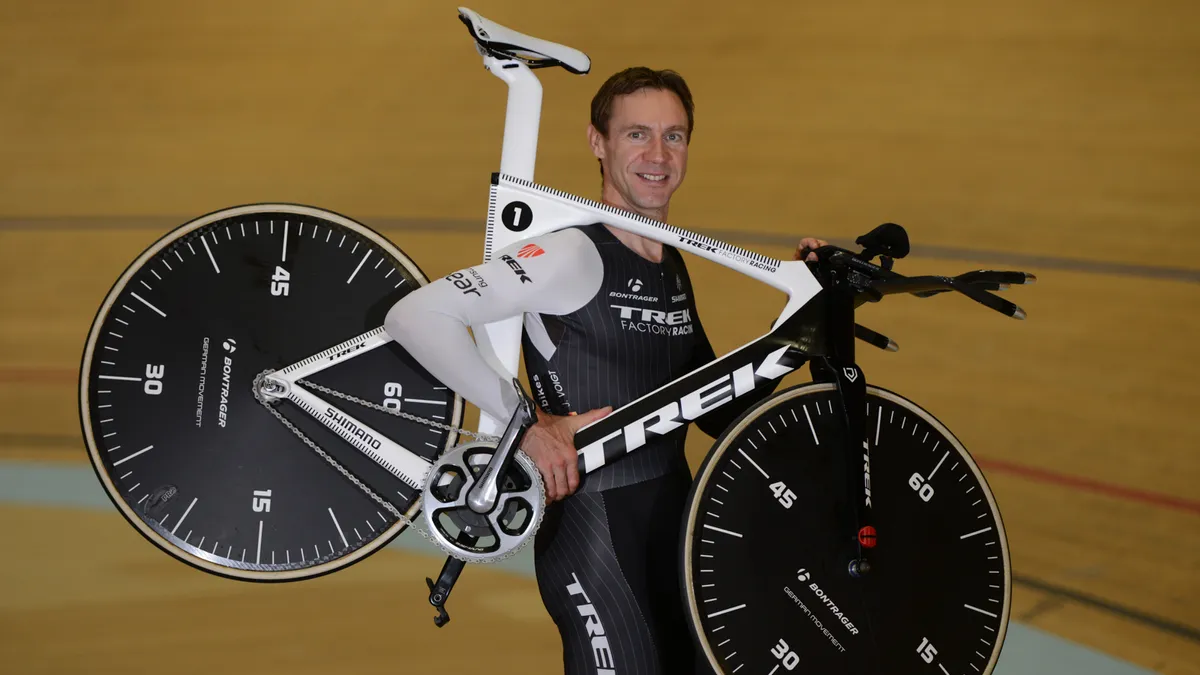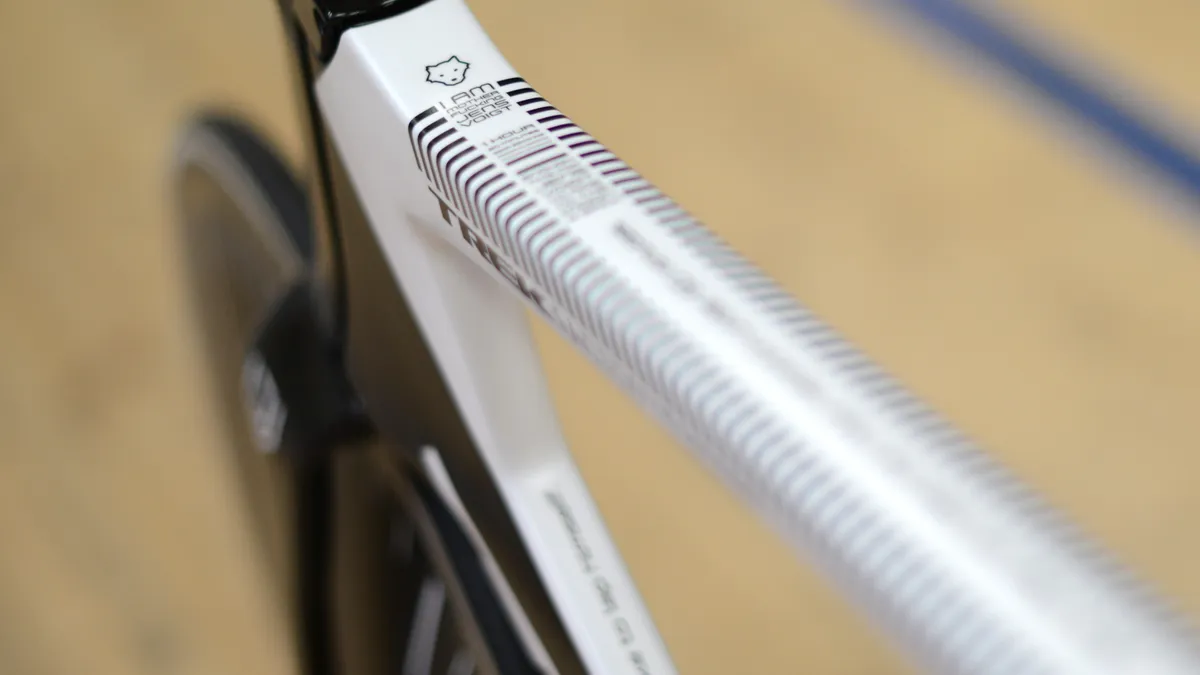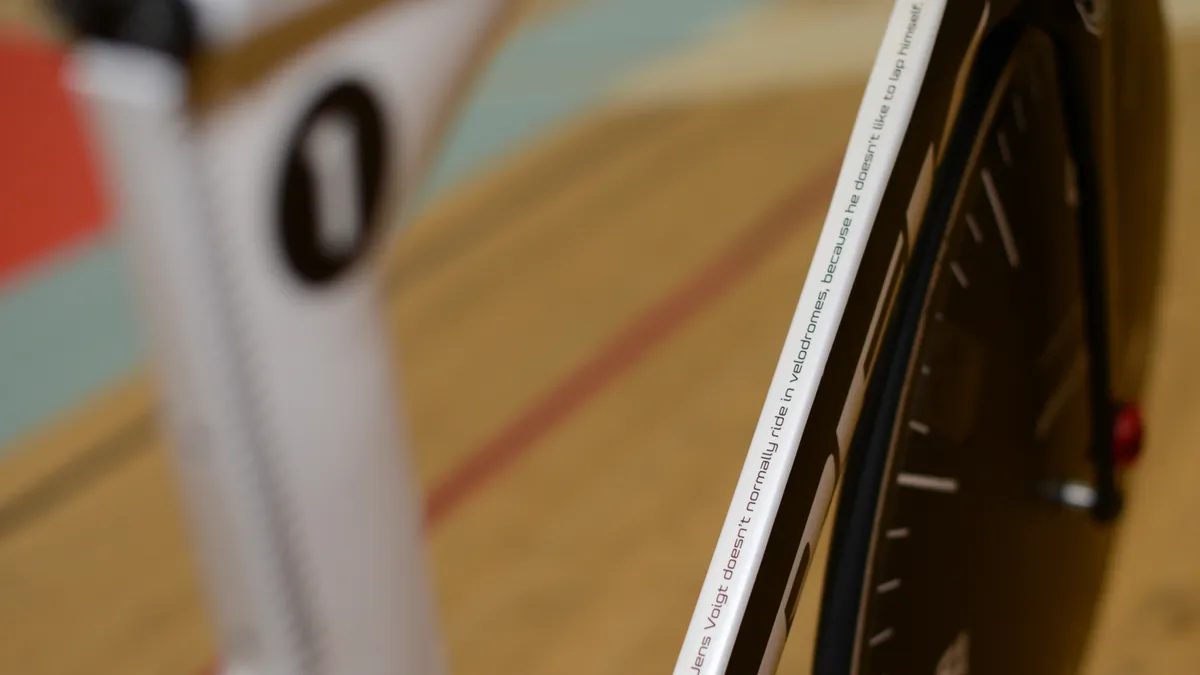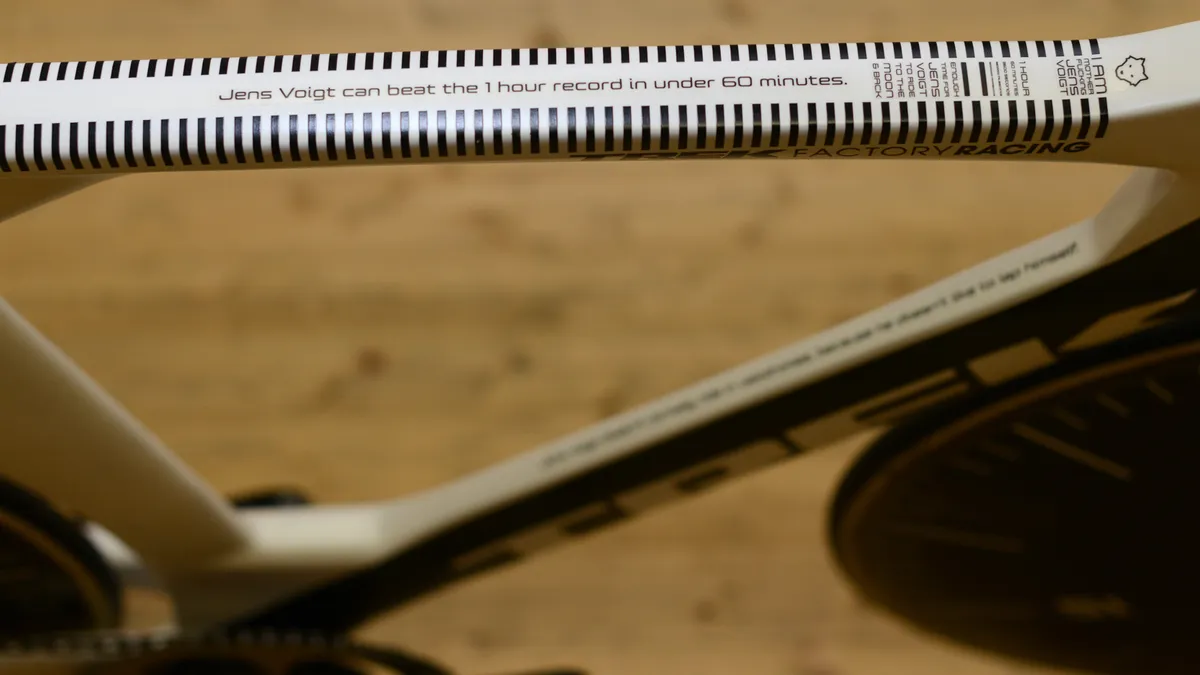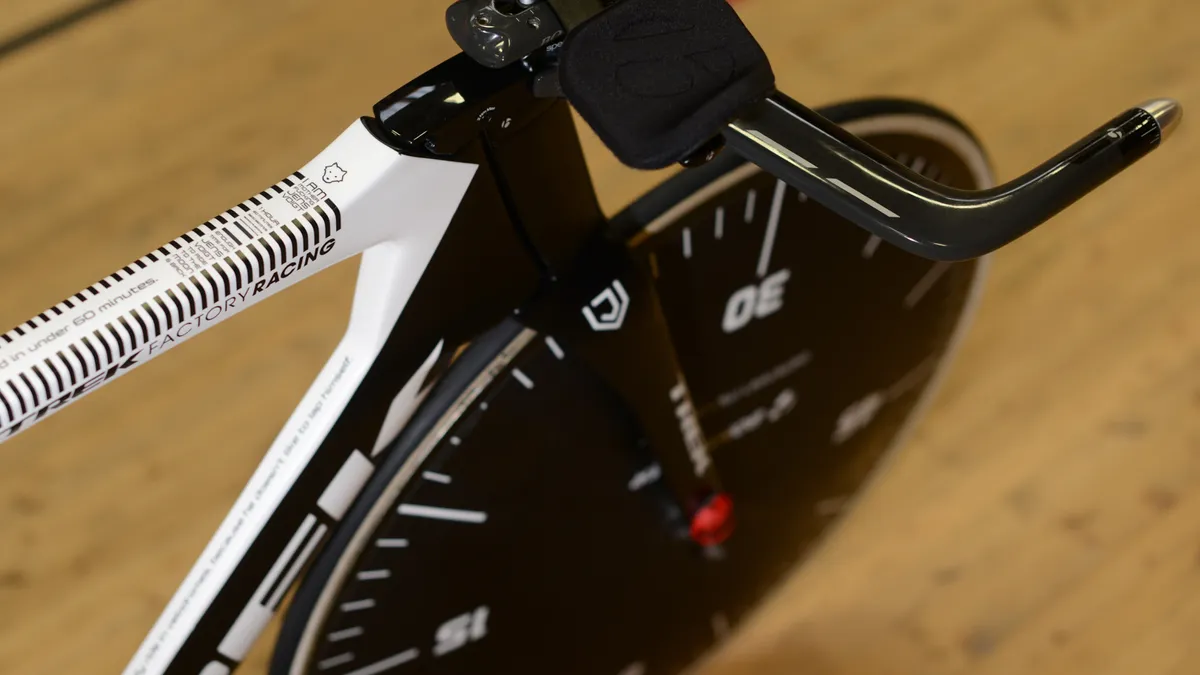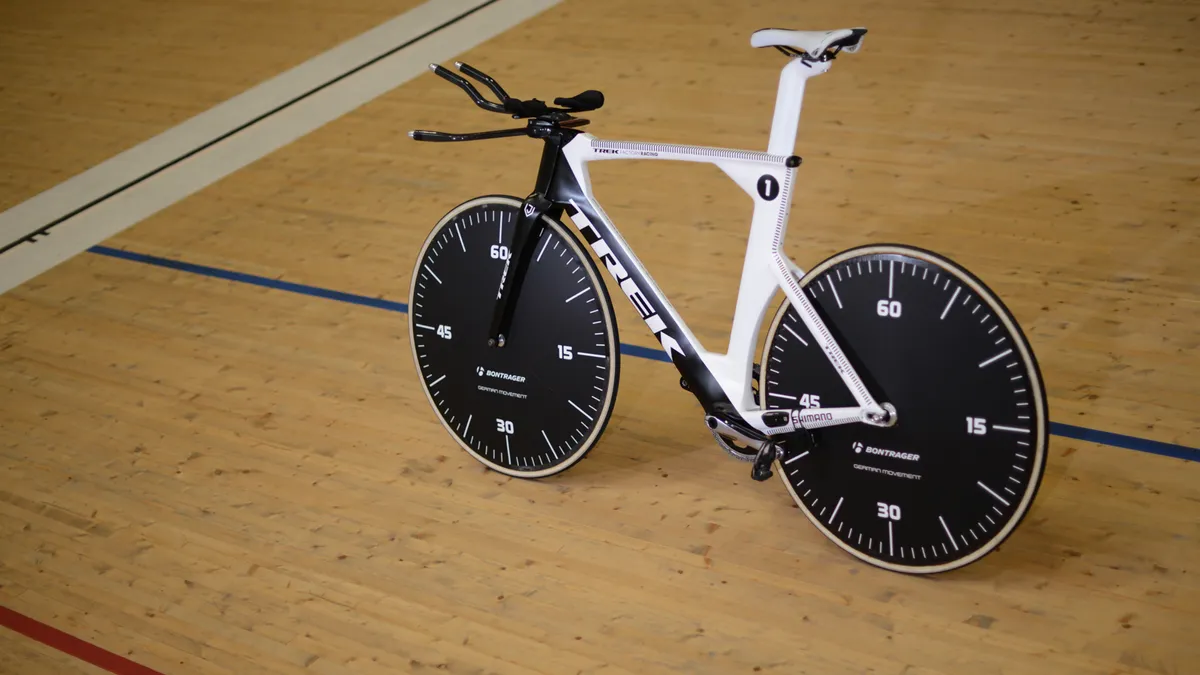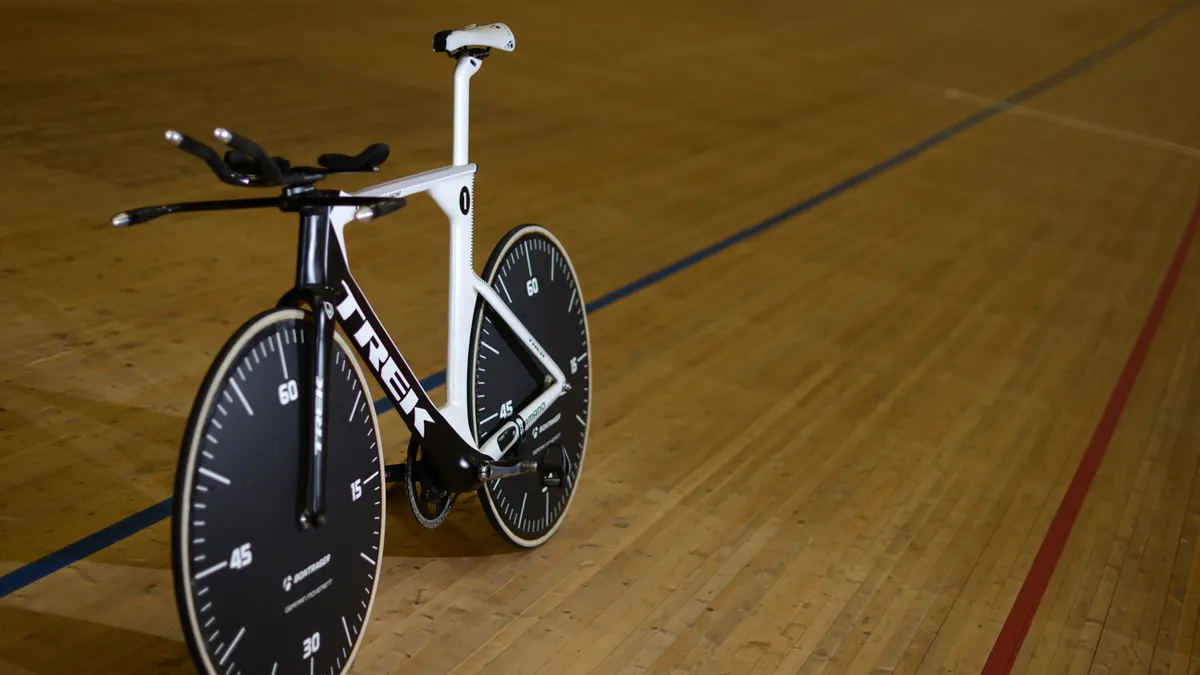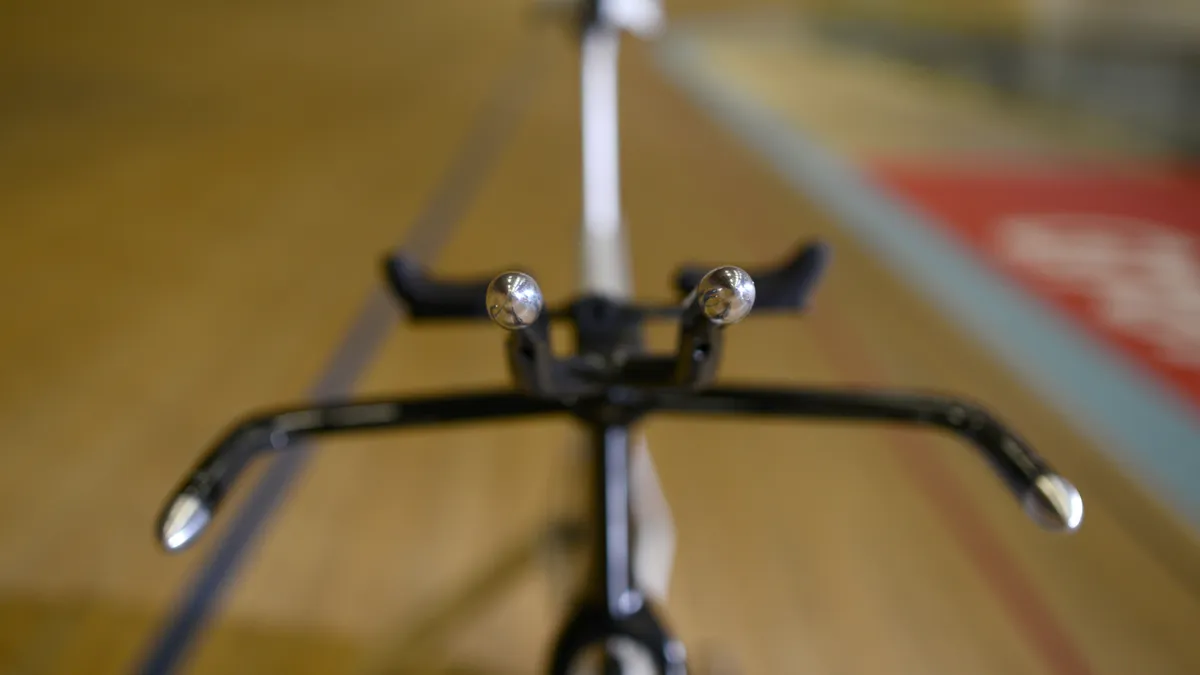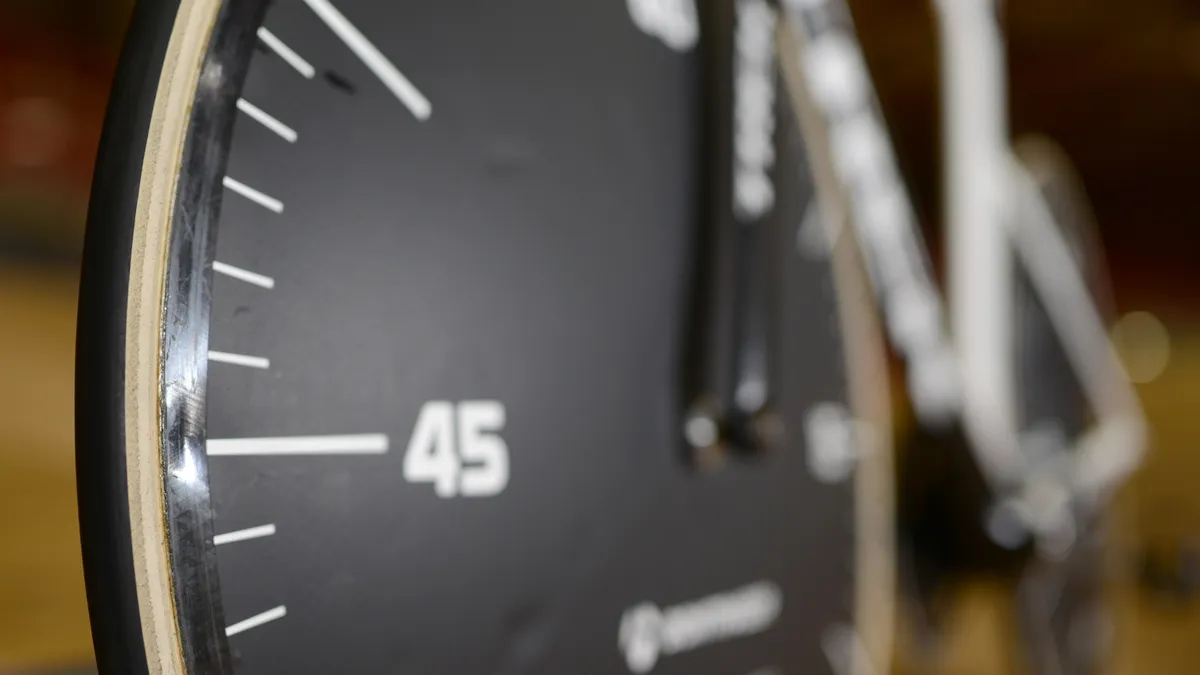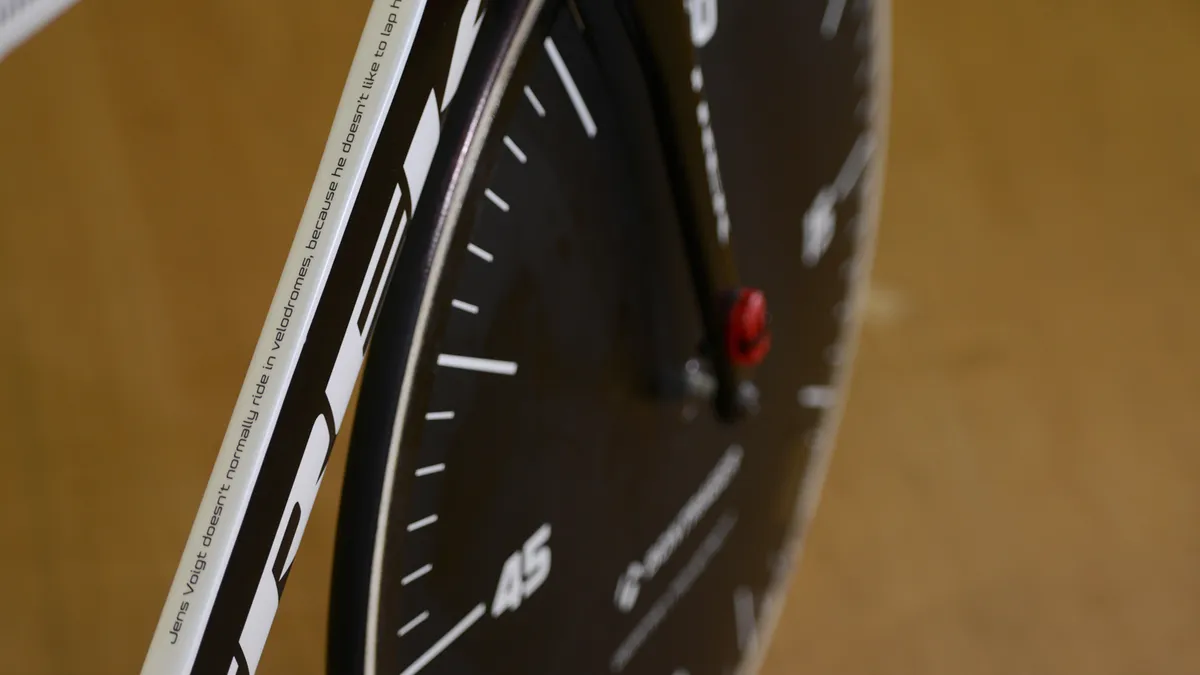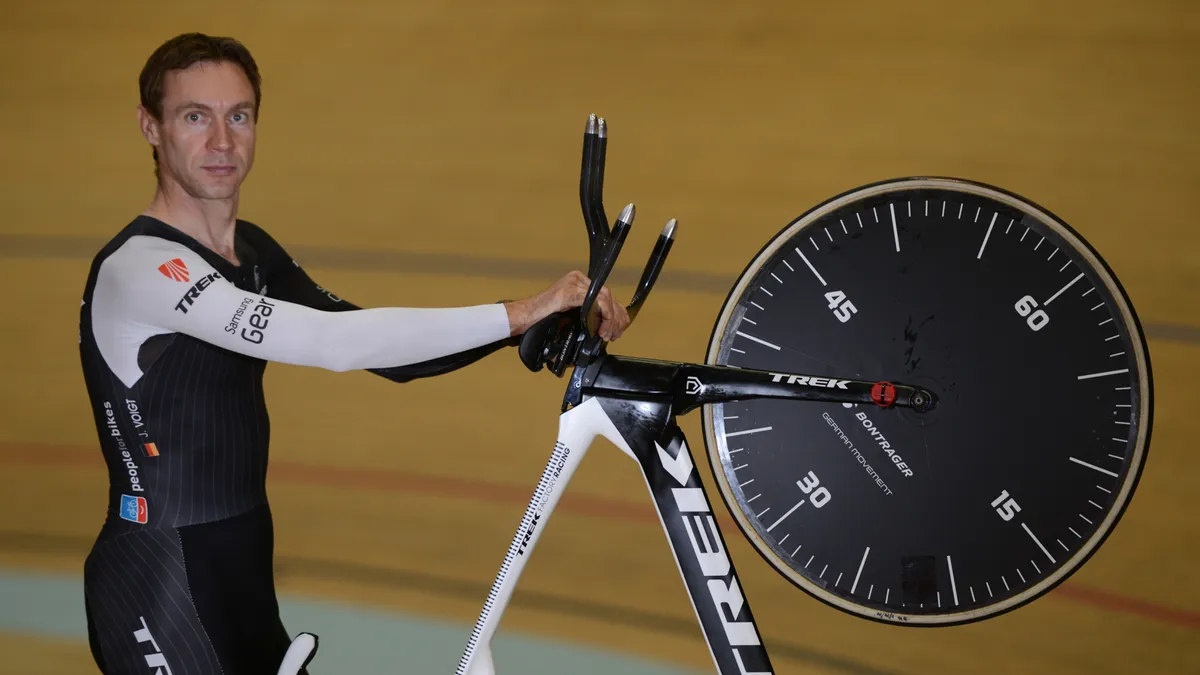When it comes to embarking on the hour record attempt, timing is of course of the essence but it's not just a factor imposed on the rider - in this case Jens Voigt - but also on the support staff and the bike manufacturer.
This article originally appeared on CyclingNews
Trek first sat down with Voigt in June of this year and the two parties discussed the possibility of attempting to break the hour record together. To add context, this is Voigt's last year as a road rider - in August he brought the curtain down on a career that has spanned three decades. However within a matter of days he publicly announced that there would be one final challenge, one final do-or-die mission that has become synonymous with his career: an attempt to break Ondrej Sosenka's record of 49.7km.
And on September 18, in Grenchen, Switzerland, Voigt will step onto the velodrome for one final hour of punishment. His 42-year-old legs will have one final chance to scream with pain before he can order them to shut up for good.
Behind the scenes Trek has been working tirelessly to provide the German with the best support and equipment possible.
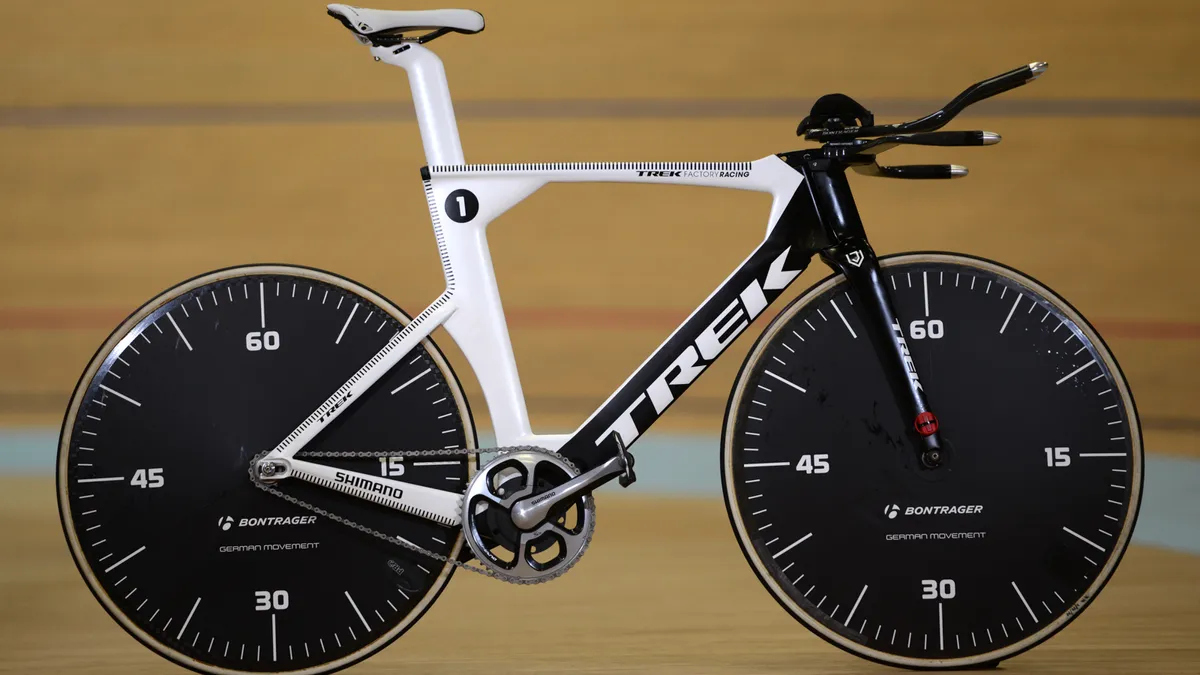
The chosen bike - a modified Speed Concept 9 Series
Voigt will ride a modified version of Trek's Speed Concept 9 Series time trial machine and he has even modified his own riding position in recent months in order to improve his aerodynamics.
"Jens' bike is based around an XL Trek Speed Concept 9 Series, which we've modified to make it ready for the track," said Trek's Jordan Roessingh, who has worked closely with a number of Trek's riders over the years, including Fabian Cancellara and the Schleck brothers.
"There were two primary areas that were modified. First, the rear dropouts were changed to accommodate track hub spacing of 120mm. Additionally, the front and rear integrated brakes were removed, and replaced with carbon filler to maintain the same surface geometry as the standard Speed Concept, without having the brakes present.
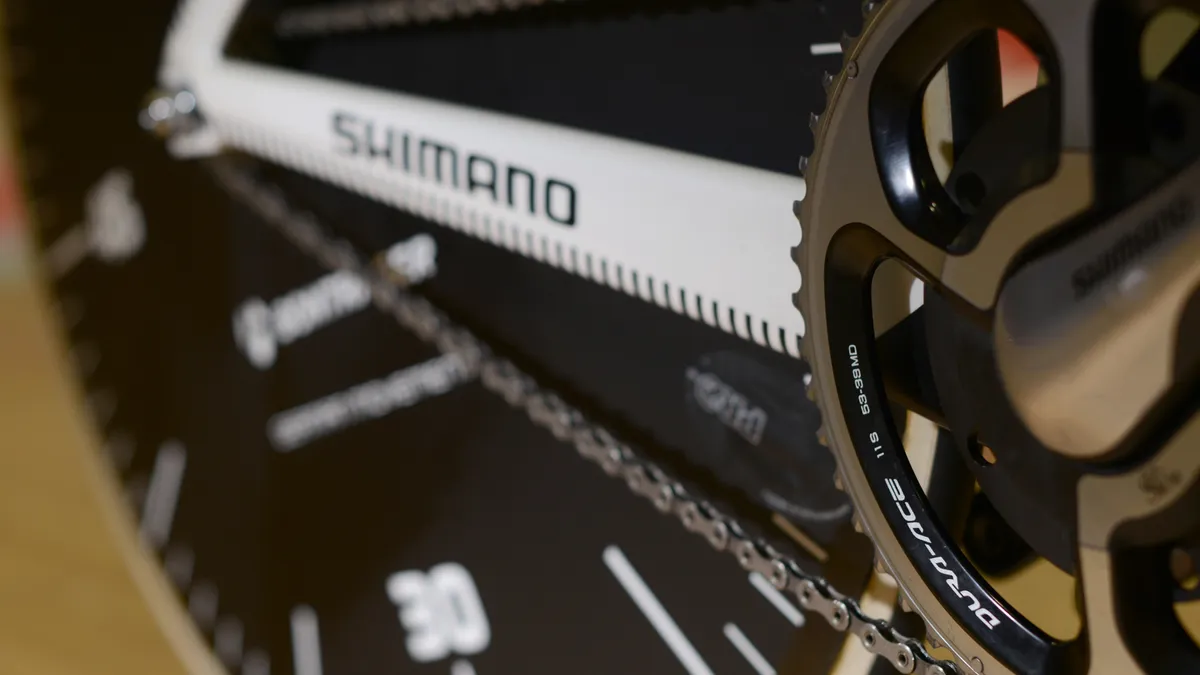
A standard road chainline is unusual for a track bike
"Another unique element to this, relative to a standard track bike, and one that's driven by the timeline we had for the attempt, is that we are actually using a standard road chainline. Typically with track cranksets, the chainring itself would be further inboard than it would be on a road crankset big ring. As we were making minimal modifications to the Speed Concept we had to maintain the chainline of a standard TT bike to ensure clearance of the chainring. So that means that we're using a standard SRM/Shimano 9000 series crankset that you would normally use on a road bike and using a standard Shimano 9000 series chainrings in place of a track-specific chainring.
"To accommodate that chainline in the back, we've also manufactured some custom rear cogs, with the help of Shimano, that are spaced out so that the chainline is optimised. We've made a few different selections of cog sizes for Jens, to ensure that he has the right gearing available to him."
Voigt and Trek are still in a position where a few further modifications and adjustments can be made. The gearing Voigt will ride has not yet been finalised, although tests have shown that a 54x14 is most likely the preferred choice.
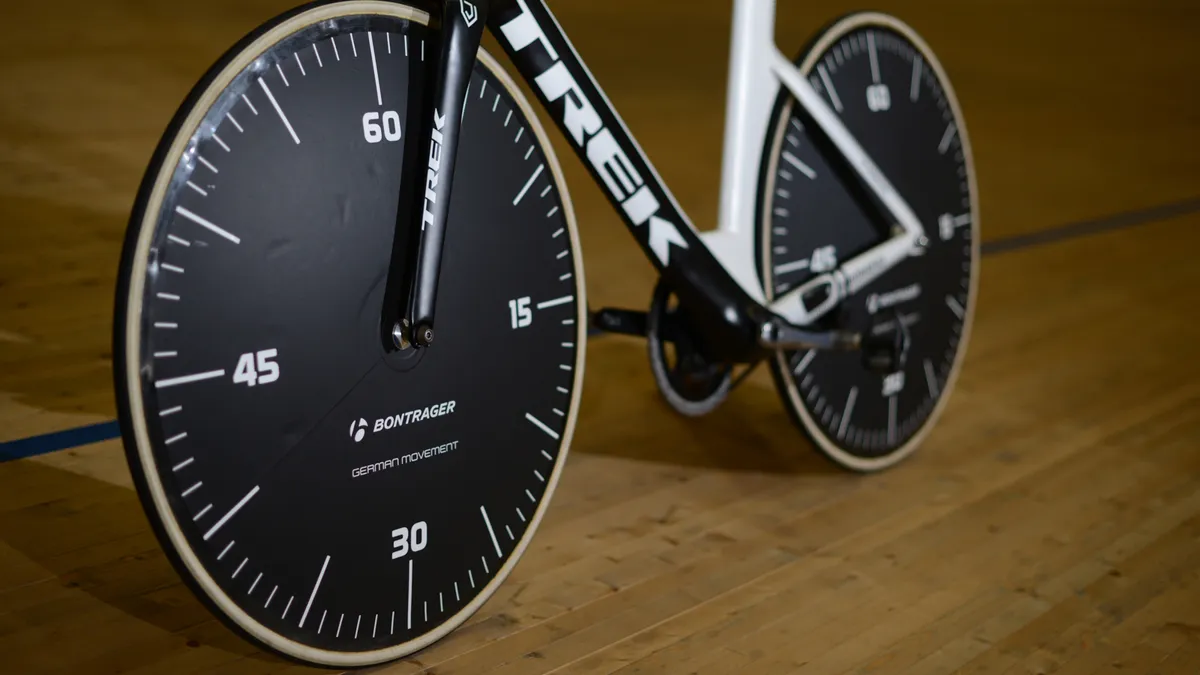
These aren't Bontrager wheels, they are actually PRO from Shimano's house
As for the remaining components, Roessingh adds: "Bontrager is the Trek wheel brand but we don't currently make disc wheels. So, to fulfill that need, we again went to our friends at Shimano, who were able to supply us with some of their Pro brand track wheels. We tested a few front wheel options, the Pro 5-spoke and disc front wheels, and the Bontrager Aeolus 9. Jens is confident in his ability to handle a front disc, so that will be the direction that we're taking, since it's the fastest.
"For the handlebars and stems, those don't vary from what we use on a standard Speed Concept. The only difference, again from what you'd see on his TT bike, is that in place of shifters and brake levers, we have machined some bullet ends to provide a clean, aero profile to the bar and extension ends."
"We also conducted an aero fitting session with Jens back in June, when the Hour Record was still just a far-out idea. The UCI had made some TT position rule changes in the spring to accommodate riders of 190cm and over, and Jens was lucky enough to just pass that height threshold. With the liberties of the new rules, we were able to improve Jens' TT position quite significantly, and he's been racing the new position since that test. We have a high level of confidence that the position is a good balance between aerodynamics and biomechanics for him, and he's been racing it for several months, so he'll remain in that position for the Hour Record.
For Roessingh, the most pressing factor has been time. Ideally, an athlete and bike company would lay down a timeframe of between 12 and 18 months in order to tackle a project as important as the Hour Record, where the cycling world's gaze will focus and scrutinise every element of the endeavour. However, Roessingh is confident that the record can be toppled and that Voigt will have the best possible machine under the circumstances.
"This has been a cool project because it's really been able to highlight Trek's vast knowledge of what makes a rider go fast. While the timeframe was extremely short, we've leveraged that knowledge to quickly find the big performance opportunities, and squeak out as many watts in savings as possible. From the helmet, skinsuit and even socks, to lubricants, bearings, and tyres, we're happy in the knowledge that Jens will have the fastest kit available come race day. All he has to do now is just concentrate on pedalling."
